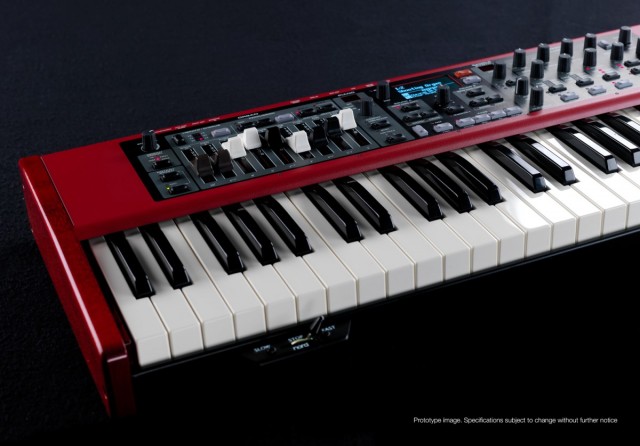Year after year, a lot of what the music instruments industry does is iterative – evolutionary, not revolutionary. But for the day-in, day-out operation of a lot of gigging musicians, some of the less-thrilling announcements are the ones that simply make life better.
That means, for example, Clavia’s announcement of a new Nord Electro 5 keyboard matters. The number of stage musicians who rely on the signature red keyboards from Sweden is simply stunning. Nord aren’t cheap, but their attention to detail has earned them a lot of impassioned enthusiasts.
I actually had the pleasure of visiting Clavia when I was in Stockholm last year, hosted by the city. These things really are built by hand in the middle of the city, in a tiny assembly line tucked away in an unassuming residential block. Now, that wouldn’t ordinarily make any difference, except that the keyboards’ success I think is owing to some careful design and construction and a lot of listening to customers. (The Scandinavian wood is just icing on the cake.) This isn’t an enormous business, but it represents what modern electronic instrument building is about – it’s making highly tailored tools for a small but dedicated clientele.
Now, the Nord Electro 5 series doesn’t really have any banner features; it’s just the old Electro, but better. In fact, you might have some trouble working out what’s new from the press materials, so let me help. A lot of this borrows from Nord’s combo organ and piano – but that could mean the Electro is the Clavia axe you really want:
It’s a better piano. 1GB of sample memory with sympathetic string resonance, first seen on the Nord Piano, have made it to the Electro. Making a stage piano sound right is sort of voodoo; there’s something special about those Nord samples that people really love for gigging, so this matters.
It’s a better, bassier organ. Here, the Electro borrows from the Nord C2D Combo Organ. You get a new Principal Pipe Organ, and a B3 Tone Wheel Bass.
It has more samples. The dedicated Sample Synth section has a library of sounds including some licensed officially from Mellotron and Chamberlin. This is no computer – think 256 MB – but it’s still in a special league for dedicated keyboards.
It finally has stereo effects. Everything is in stereo, you get control pedal access to effects, there’s a new Stereo Tub overdrive, and you can use Delay and Reverb separately.
It’s gone OLED. You get a brighter, clearer OLED display.
It’s more capable in live situations. Layer or split Organ/Piano, Piano/Sample Synth, or Sample Synth/Organ into separate sound slots. And – in a feature every single live keyboard and live-oriented software ought to have, you can make Set Lists of programs so you’re not lost dialing through presets between songs.
There are three models. The 5D 61 and 5D 73 sport drawbars, and semi-weighted “waterfall” keyboards preferred by electric piano and organ players. That also keeps their weight at 8 kg or less.
The Electro 5 HP 73 is for piano players, with a 73-note hammer action piano. And it weighs a tidy11 kg. It’d be high on my list for serious dedicated keyboards, alongside entries like the Kurzweil or Kawaii – but more portable. (Why so many hammer action keyboards insist on a full 88 keys, when you don’t need that many keys to actually play music, I don’t know. Acoustic pianos depend on sympathetic resonance from the bigger strings for their sound, so at least they have an excuse.)
Press announcement:
http://www.nordkeyboards.com/about-us/press/nord-electro-5


